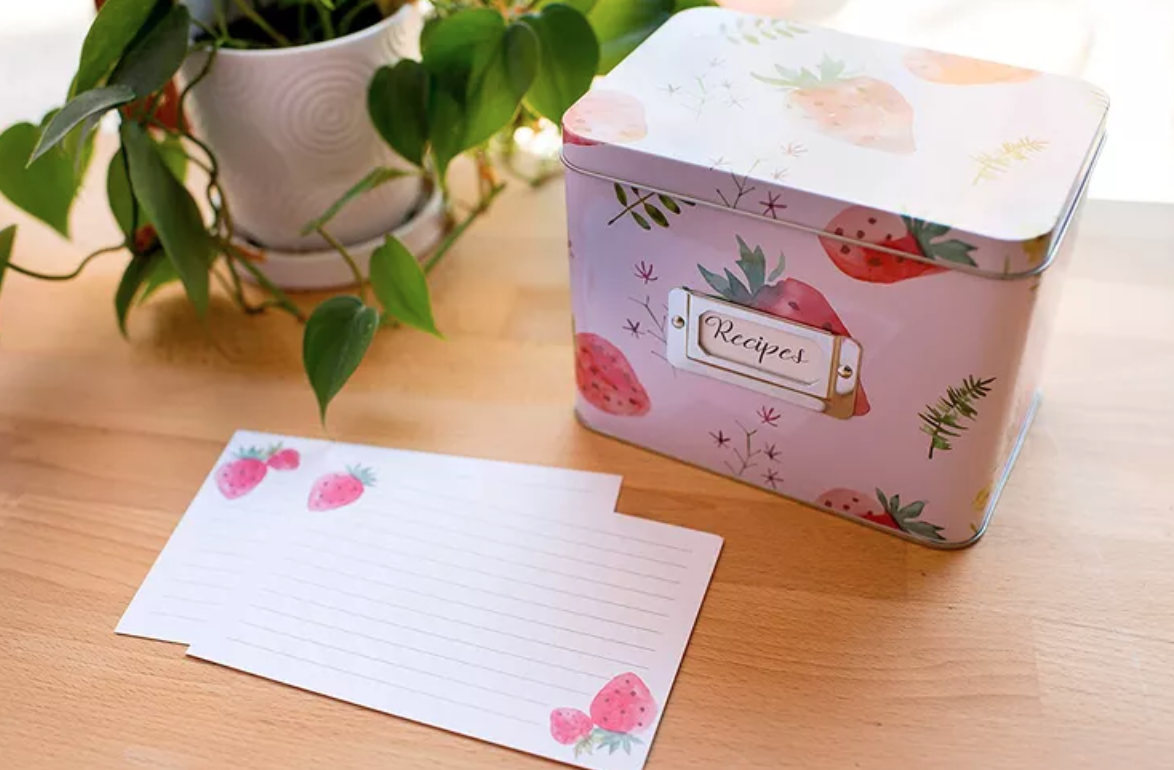TABLE OF CONTENTS :
- Introduction
- Step 1: Gather All Your Recipes
- Step 2: Sort Recipes by Category
- Step 3: Declutter Your Recipe Collection
- Step 4: Create an Efficient Organization System
- Step 5: Choose the Right Recipe Cards and Dividers
- Step 6: Label and Decorate for Personalization
- Step 7: Regular Maintenance for Your Recipe Box
- Digital vs. Physical Recipe Organization: Combining Both
- Step 8: Create a Cooking Journal or Recipe Log
- FAQs
- Conclusion
How Do I Organize My Recipe Box? A Complete Guide
Struggling to organize your recipe box? Learn the best ways to declutter, categorize, and efficiently store your favorite recipes in this step-by-step guide.
Introduction
How do I organize my recipe box?

A recipe box is more than just a storage solution—it’s an organized collection of meals, ideas, and traditions. Whether you’ve accumulated handwritten recipes, family favorites, or printed meal ideas from cookbooks, a properly organized recipe box is essential. With the rise of digital storage, many people are still choosing to keep their physical boxes for the sentimental value, tactile experience, and personal connection to family recipes.
In this guide, we’ll walk you through how to declutter and organize your recipe box while ensuring it’s efficient and easy to use.
Step 1: Gather All Your Recipes
The first step in organizing your recipe box is gathering all the recipes you’ve accumulated over the years. These might include:
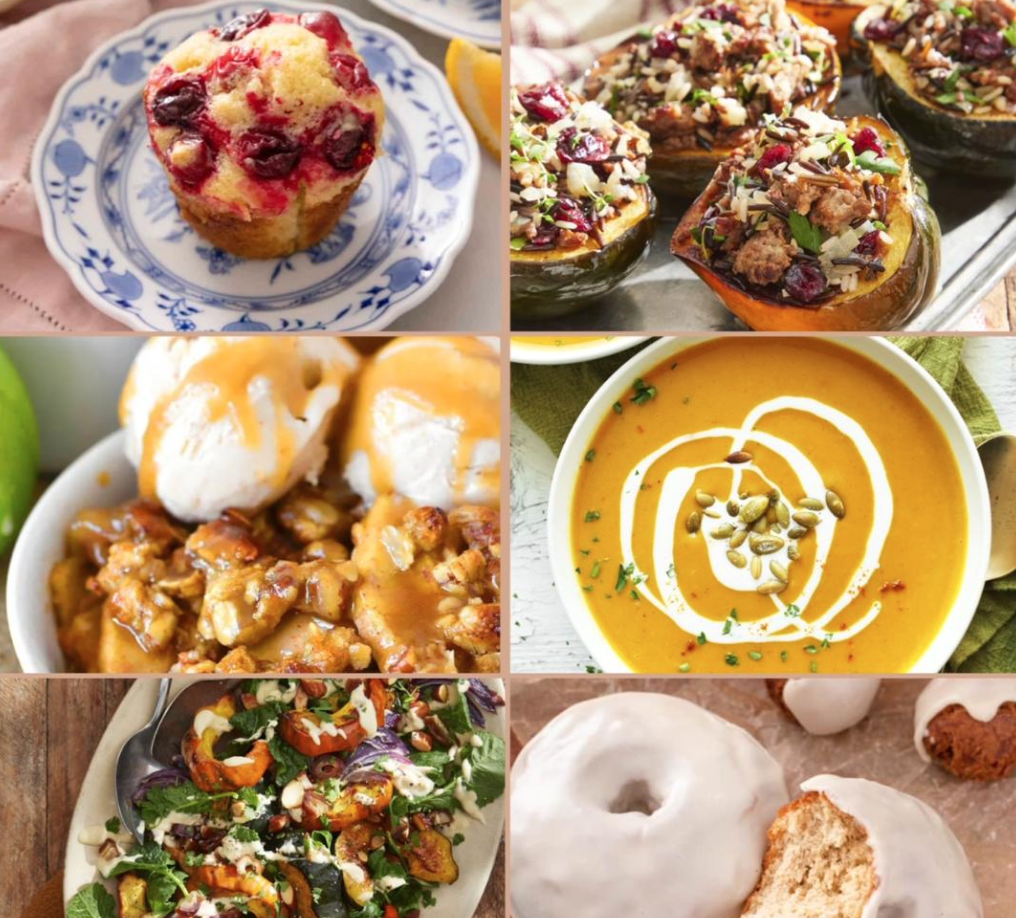
- Handwritten Recipe Cards: Family heirlooms, handwritten by loved ones.
- Printed Recipes: Magazine clippings or printouts from online sources.
- Digital Recipes: You can print your favorite online recipes to keep in the box.
By gathering everything together, you’ll be able to assess how much space and organization is needed to store them all. You can also choose to use apps like Evernote to back up some of your recipes digitally.
Step 2: Sort Recipes by Category
Now that all your recipes are in one place, it’s time to sort them into categories. There are several common ways to categorize recipes based on your personal cooking style:
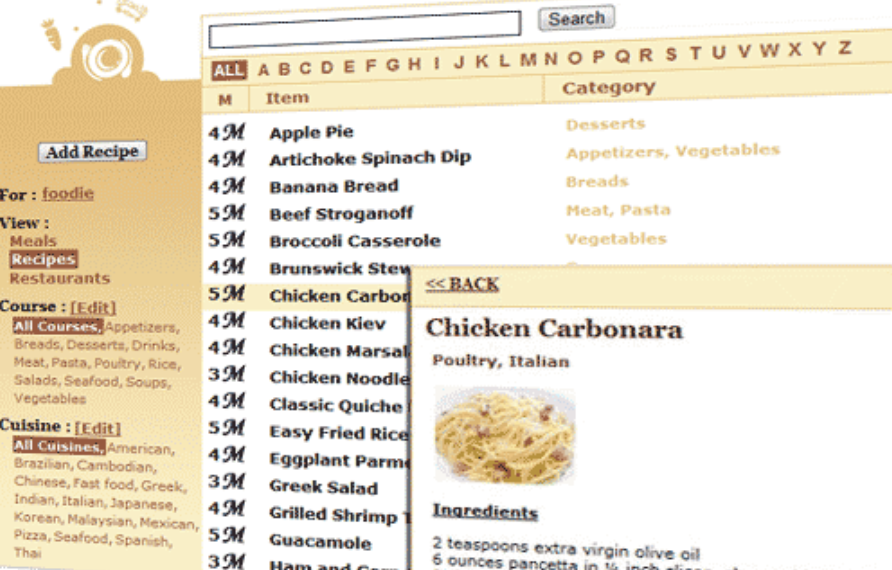
- Meal Type: Breakfast, lunch, dinner, and snacks.
- Dish Type: Appetizers, main courses, desserts, drinks.
- Ingredients: Sort recipes by primary ingredients, such as chicken, seafood, or vegetables.
- Dietary Preferences: Create sections for vegan, gluten-free, or low-carb recipes.
- Occasions: Separate out recipes for holidays, special events, or family gatherings.
Pro Tip: Use dividers to create clear distinctions between categories. Websites like Amazon Recipe Box Dividers offer customizable dividers for your box.
Step 3: Declutter Your Recipe Collection
It’s likely you’ve accumulated recipes over the years that you no longer use or enjoy. Now is the time to declutter:
- Outdated Recipes: Toss out those you no longer like or don’t plan on cooking.
- Duplicates: Get rid of recipes that have been printed or saved multiple times.
- Irrelevant Recipes: Remove recipes that no longer fit your diet or cooking style.
Decluttering is key to keeping your recipe box manageable and ensuring that only relevant, useful recipes remain.
Step 4: Choosing how to organize your recipe cards depends on your cooking habits. Here are some effective systems:
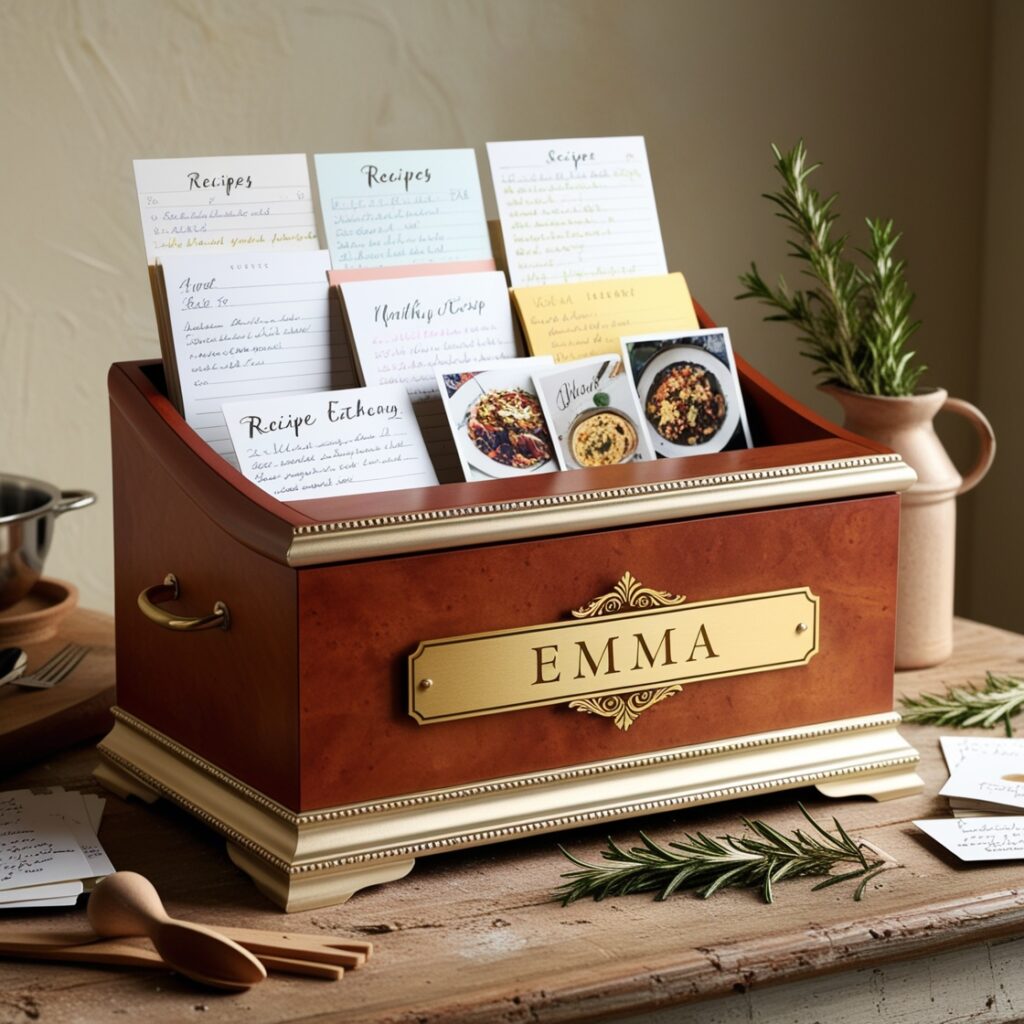
- Alphabetical Order: Organizing by recipe title or key ingredient.
- Meal Type or Dish Type: Group recipes based on their category (appetizers, main courses, desserts).
- Frequency of Use: Frequently used recipes can be placed in the front, while occasional recipes go in the back.
- Seasonal or Holiday Sections: Keep holiday-specific recipes grouped together.
Tip: Add clear labels to your dividers to make it easier to find specific recipes when you need them. Consider options from Etsy’s custom dividers.
Step 5: Choose the Right Recipe Cards and Dividers
Choosing high-quality recipe cards and dividers can enhance the organization of your box. Consider:
- Durable Recipe Cards: Laminated or coated cards that resist stains and spills.
- Consistent Size: Choose recipe cards that fit neatly into your box (standard sizes are 4×6 or 5×7).
- Customizable Dividers: Use personalized dividers to keep categories separate and easily accessible.
For stylish dividers, explore options on Etsy’s Custom Recipe Box.
Step 6: Label and Decorate for Personalization
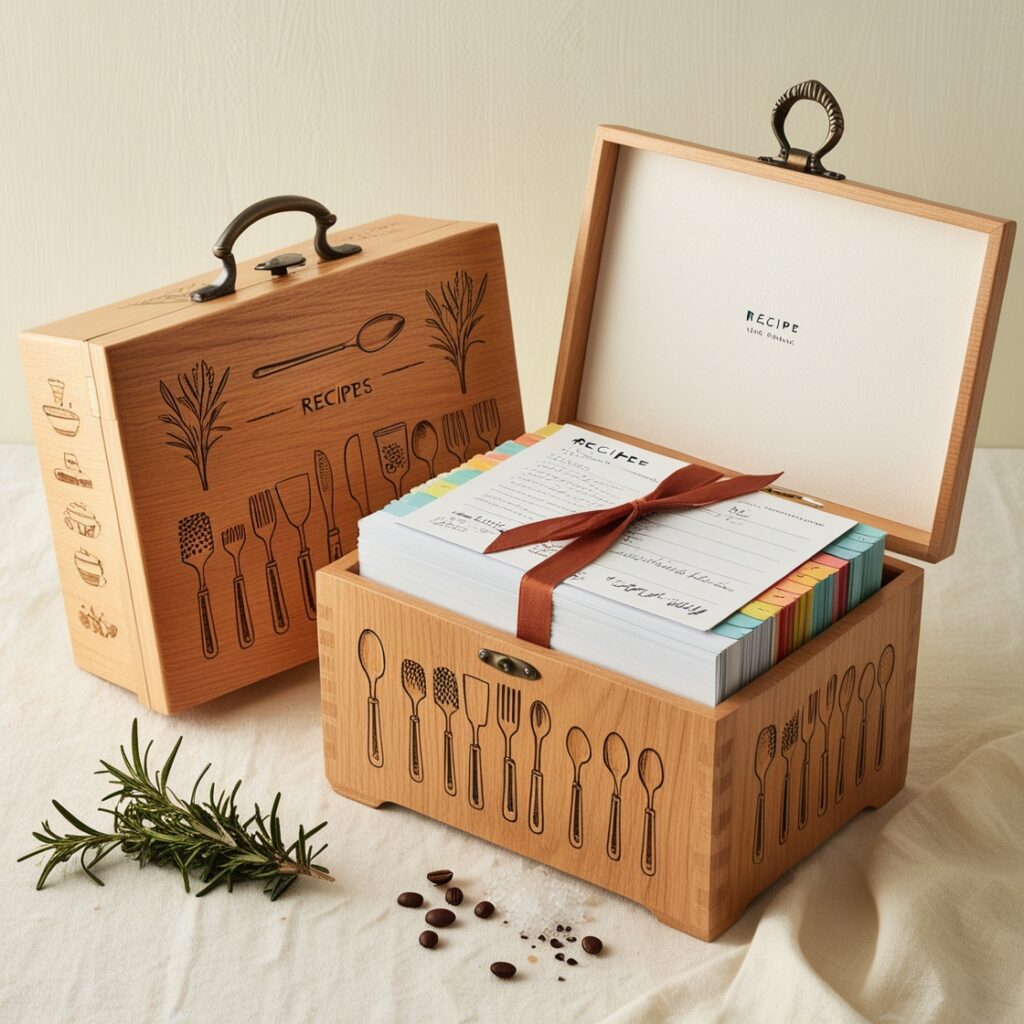
Make your recipe box uniquely yours by adding personal touches. Consider:
- Labeling Your Sections: Use custom fonts, stickers, or printed labels to clearly mark each section.
- Color Coding: Assign different colors for different types of meals, like green for salads, red for desserts, and blue for mains.
- Adding Photos: Include photos of the finished dish or family memories associated with the recipe.
Personalizing your recipe box makes it more enjoyable to use and adds sentimental value.
Step 7: Regular Maintenance for Your Recipe Box
To keep your recipe box in good shape, it’s essential to maintain it regularly. Here’s how:
- Quarterly Clean-Up: Go through your recipes every few months and remove ones you no longer use.
- Add New Recipes: Continuously add new recipes to keep your box updated with fresh ideas.
- Protect Your Recipes: Use plastic sleeves or laminated cards to prevent damage from spills.
Consider using tools like The Kitchn’s recipe organization tips to streamline this process.
Digital vs. Physical Recipe Organization: Combining Both
In today’s tech-driven world, many people use both digital and physical systems to store recipes. Here’s how you can combine them:
- Digital Storage for Convenience: Use apps like Paprika or Evernote to store online recipes.
- Physical Recipe Box for Tradition: Keep family recipes, special meals, or holiday dishes in your physical box to maintain their sentimental value.
Step 8: Create a Cooking Journal or Recipe Log
To add even more value to your recipe box, create a cooking journal to accompany it. Here are some ideas for what to include:
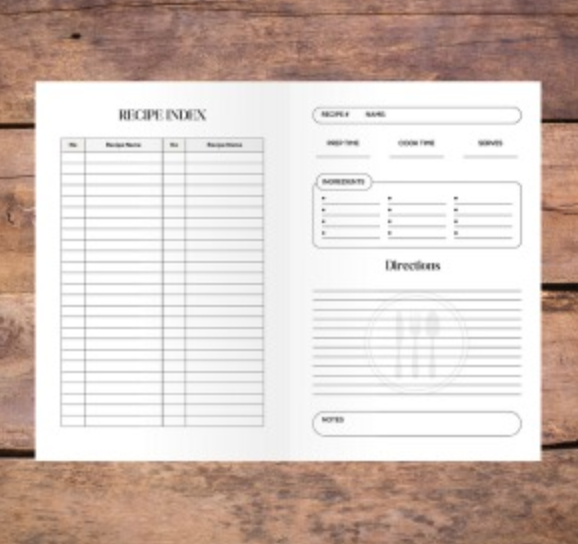
- Recipe Adjustments: Document any changes you make to recipes, such as ingredient substitutions or cooking techniques.
- Meal Planning: Use the journal to plan your meals for the week.
- Ingredient Tracking: Record seasonal ingredients and note the best recipes to use them in.
A cooking journal can help you keep track of your cooking journey and make it easier to plan future meals. ( How do I organize my recipe box? )
FAQs
What’s the best way to categorize recipes?
It depends on your cooking style. Many people organize by meal type, dish type, or dietary needs. You can also sort them based on seasonality or frequency of use.
How often should I declutter my recipe box?
At least once a year, go through your recipe box to remove outdated or unused recipes. This keeps the collection manageable.
Can I combine digital and physical recipe storage?
Yes! Many home cooks prefer to store everyday recipes digitally while keeping heirloom or favorite recipes in a physical box for a more personal touch.
Where can I buy custom dividers and recipe cards?
You can purchase dividers and recipe cards from retailers like Amazon and Etsy.
Conclusion
A well-organized recipe box is not only a tool for meal planning but also a personal collection of cherished recipes. By following these steps, you’ll declutter, categorize, and personalize your recipe box to create a resource that’s both practical and sentimental. Whether you choose to go fully physical, combine it with digital tools, or maintain a cooking journal, an organized recipe box will be a valuable asset in your kitchen.

